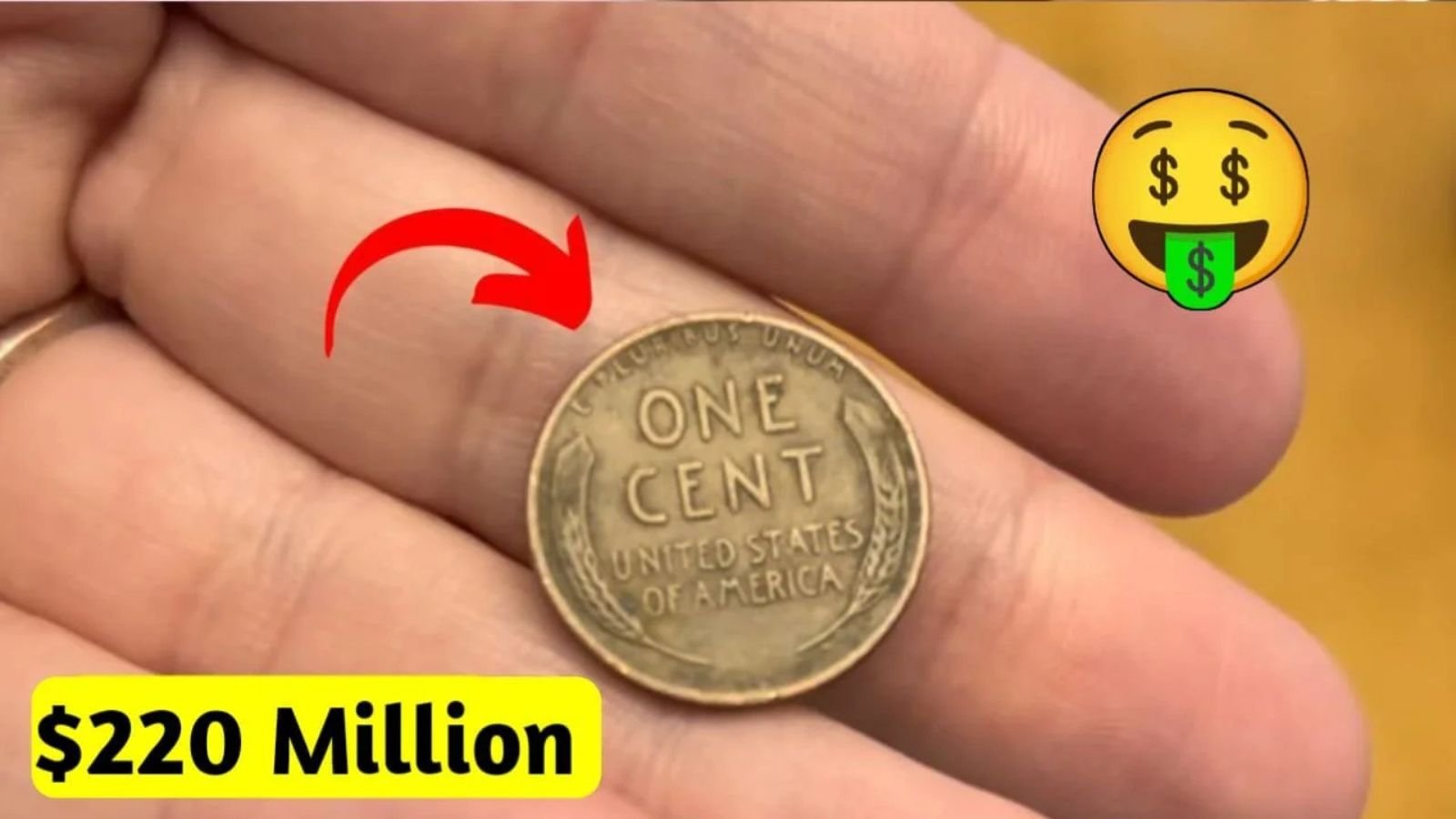Most of us barely glance at the change we receive after grabbing a coffee or picking up groceries. Pennies often end up forgotten at the bottom of purses, lost in couch cushions, or tossed into jars without a second thought. But what if one of those seemingly insignificant coins was actually worth hundreds of thousands of dollars? It might sound unbelievable, but that’s exactly the reality for some lucky individuals who stumble upon a rare Lincoln Wheat Penny — with some fetching up to an astonishing $510,000 at auctions!
Even more exciting is the fact that a few of these valuable Lincoln Wheat Pennies could still be out there today, hiding quietly in everyday pocket change, waiting to be discovered.
Lincoln Wheat Penny: The Penny That Changed Everything
The Lincoln Wheat Penny made its debut in 1909, crafted to honor the 100th anniversary of Abraham Lincoln’s birth. Up until then, U.S. coins typically displayed symbolic figures like Lady Liberty, rather than real historical individuals. The release of the Lincoln Wheat Penny marked a significant cultural moment, as Lincoln became the first actual person to be depicted on American currency.
The man behind the iconic design was Victor David Brenner. His artwork portrayed a dignified profile of Lincoln on the front (obverse) side, while the reverse featured two stylized stalks of wheat, symbolizing prosperity and strength. This design would go on to define an era, and it earned the coin its now-familiar nickname, the “Wheat Penny.”
While the Lincoln Wheat Penny started as just another form of everyday currency, over time, certain rare varieties transformed it into one of the most sought-after collectibles in numismatic history.
A Fortunate Mistake: The 1943 Copper Penny
Fast-forward to 1943, a time when the world was deep in the throes of World War II. Resources like copper were in critical demand to support the war effort, particularly for manufacturing ammunition and military equipment. In response, the U.S. Mint made a significant change: pennies were struck from steel coated with zinc instead of their traditional copper composition.
These new steel cents had a silvery appearance and felt lighter to the touch. However, amid this massive transition, a few copper blanks from 1942 mistakenly made their way into the minting presses in 1943. The result? A tiny, accidental batch of 1943 Lincoln Wheat Pennies made from copper — a mistake that would later become one of the greatest treasures in coin collecting history.
Only about 20 authentic examples of the 1943 copper Lincoln Wheat Penny are known to exist today. If you’re fortunate enough to find one in top condition, it could be worth as much as $510,000 — or even more, depending on its quality and the demand from collectors.
Wondering if you might have one? It’s simple to check: grab a magnet and see if your 1943 penny sticks. If it doesn’t, and it has a coppery tone instead of a silvery sheen, you just might be holding a small fortune.
Other Lincoln Wheat Pennies Worth Big Bucks
While the legendary 1943 copper Lincoln Wheat Penny grabs most of the headlines, it’s certainly not the only version that can make collectors swoon. Several other rare and valuable Lincoln Wheat Pennies are highly prized among enthusiasts:
- 1909-S VDB: Minted in San Francisco, this penny prominently featured Victor David Brenner’s initials (“VDB”) on the reverse. Due to public backlash over the initials’ size, production was quickly halted after only 484,000 coins were made, making the 1909-S VDB one of the rarest and most coveted Lincoln Wheat Pennies.
- 1914-D: Struck at the Denver Mint, this particular penny is extremely hard to find in high grades, making it a valuable addition to any serious collection.
- 1922 “Plain”: Due to a striking error at the Denver Mint, some 1922 pennies were produced without a mint mark — a rare occurrence that makes them highly collectible.
- 1955 Double Die Obverse: One of the most famous error coins in U.S. history, the 1955 Lincoln Wheat Penny features noticeably doubled lettering and numbers on the obverse, creating a striking and desirable appearance.
Each of these Lincoln Wheat Pennies carries not only significant monetary value but also a fascinating piece of American history.
How to Spot a Valuable Lincoln Wheat Penny
If you’re now itching to rummage through your piggy banks and coin jars, here’s what you need to know to spot a potential gem:
- Examine the Date Closely: Certain years, such as 1909, 1914, 1922, 1931, 1943, and 1955, are particularly important when hunting for rare Lincoln Wheat Pennies.
- Test the Metal Composition: For 1943 pennies, perform the simple magnet test. Authentic 1943 copper pennies will not stick to a magnet.
- Inspect the Mint Mark: Just below the date, you’ll find a small letter indicating the mint of origin — “S” for San Francisco, “D” for Denver, and no letter for Philadelphia. Certain combinations are much rarer than others.
- Look for Errors: Doubled dies, missing mint marks, off-center strikes, and other minting errors can add substantial value.
- Condition Matters: In the world of coin collecting, condition is king. A well-preserved Lincoln Wheat Penny free from heavy scratches, corrosion, or wear can command much higher prices.
Keeping a magnifying glass and a basic understanding of key characteristics on hand can turn everyday coin sorting into a thrilling treasure hunt.
Handle With Care
If you believe you’ve found a potentially valuable Lincoln Wheat Penny, resist the urge to clean it! Cleaning coins — even gently — can drastically reduce their value by damaging the natural patina that collectors prize.
Instead, carefully store your coin in a soft coin flip or a plastic holder, touching only the edges. If you think your find might be significant, it’s wise to have it professionally evaluated and graded by a reputable coin grading service. These services will not only verify authenticity but also encapsulate the coin to preserve its condition.
Coin Collecting: The Adventure of a Lifetime
One of the most exciting aspects of the Lincoln Wheat Penny story is that these treasures are still, even today, hiding in plain sight. Unlike gold bars or antique jewelry locked away in vaults, valuable Lincoln Wheat Pennies might just be sitting in a dusty jar in someone’s basement, tucked away in an old wallet, or casually handed to you as change at the grocery store.
You don’t need to invest thousands to get started with coin collecting. All it takes is a sharp eye, a little knowledge, and a willingness to look closer at the coins you come across every day. The thrill of the hunt is part of what makes numismatics so rewarding — the idea that history, art, and even potential wealth could be found in the palm of your hand.
A Coin With a Story to Tell
Ultimately, the Lincoln Wheat Penny is much more than a piece of currency. It’s a small but enduring symbol of America’s journey — a testament to the country’s leaders, its struggles during wartime, its artistic achievements, and even its human mistakes.
Each Lincoln Wheat Penny tells a story. Some stories are humble, tracing back to ordinary commerce, while others are remarkable tales of fortune, rarity, and history. It reminds us that even the most ordinary objects can hold extraordinary value, both monetarily and historically.
So next time you get some pennies back in your change, pause for a moment. Take a closer look. It might seem like just another common coin, but it could be a Lincoln Wheat Penny — and it could be the hidden treasure you never expected to find.
Some Important Link
| Telegram Group | Click Here |
| WhatsApp Group | Click Here |
| Home Page | Click Here |













